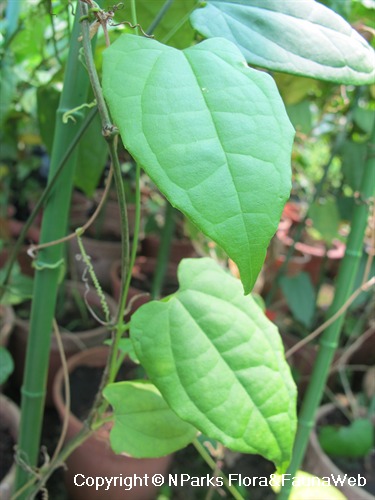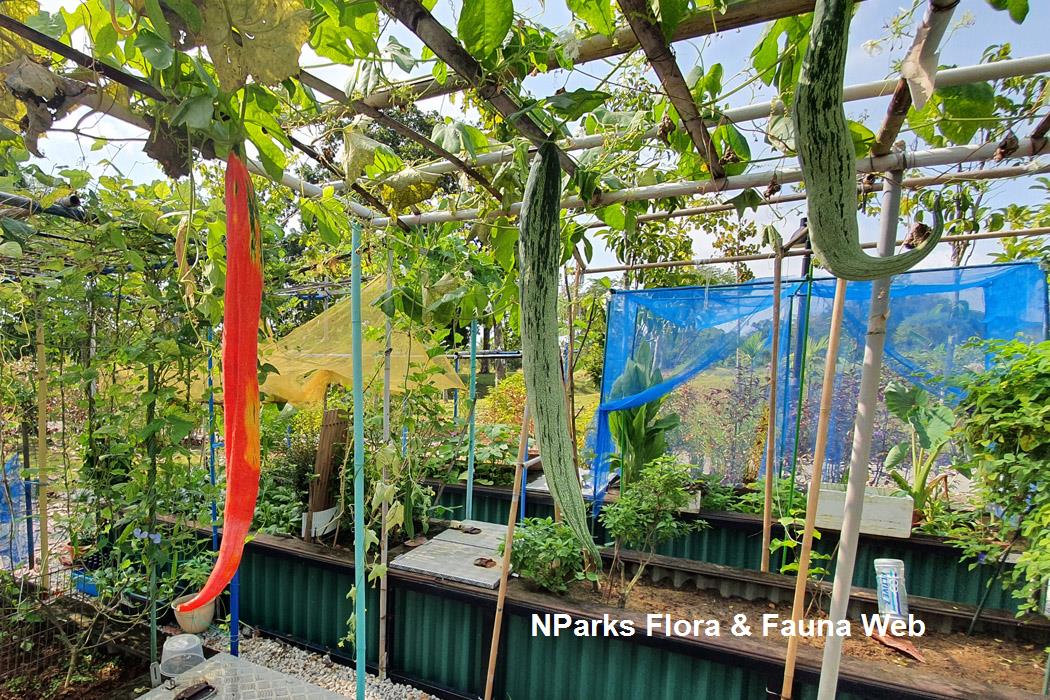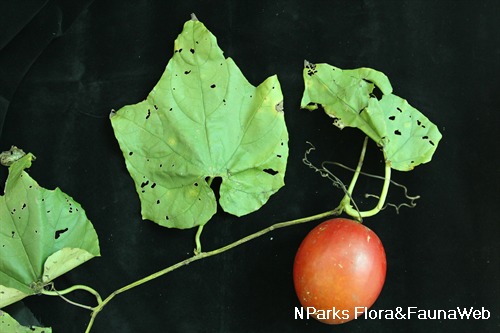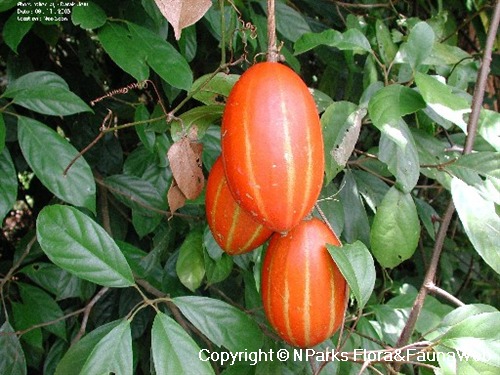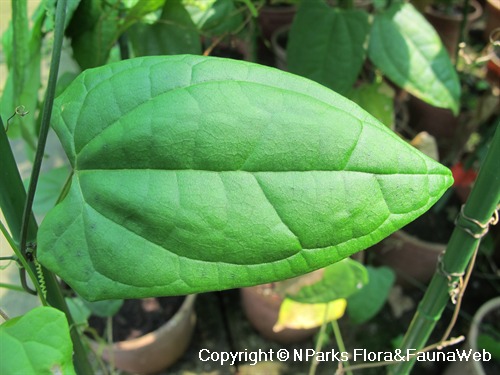
Back
Trichosanthes elmeri Merr.
| Family Name: | Cucurbitaceae |
| Common Name: | Akar Cabang Tiga, Cabang Tiga, Mentimun Dendang, Timun Dendang Lunjung |
Name
Classifications and Characteristics
| Plant Division | Angiosperms (Flowering Seed Plants) (Dicotyledon) |
|---|---|
| Plant Growth Form | Climber |
| Lifespan (in Singapore) | Perennial |
| Mode of Nutrition | Autotrophic |
| Plant Shape | Irregular |
| Maximum Height | 10 m |
Biogeography
| Native Distribution | Sumatra, Peninsular Malaysia, Singapore, Borneo, and the Philippines |
|---|---|
| Native Habitat | Terrestrial |
| Preferred Climate Zone | Tropical |
| Local Conservation Status | Native to Singapore (Endangered (EN)) |
Description and Ethnobotany
| Growth Form | It is a unisexual climber up to 10 m long, with branched tendrils. |
|---|---|
| Foliage | Its stalked, palmate leaves have 3 or 5 leaflets with papery to rather leathery leaf blades. The middle leaflet is drop-shaped-oblong and 8.5–18 by 3.5–8.5 cm. The leaflets have a rough texture above and glands are scattered over them. |
| Flowers | Its 5–15 flowered male flowering shoots are 10–30 cm long. The fragrant flowers are nocturnal and white. Probracts (leaf-like structure) with glands are present at the base of flowers, and about 5–7 by 3–6 mm. |
| Fruit | Its orange-red fruits are egg-shaped or egg-shaped-elliptic and about 12–20 by 5–10 cm. Its blackish-brown seeds are 16–20 by 11–20 mm. |
| Habitat | It grows in edges of primary, secondary and swamp forests or on river banks, up to 900 m in altitude. |
| Associated Fauna | Its flowers are insect-pollinated. |
| Cultivation | It can be propagated by seed. |
| Etymology | Latin Trichosanthes, hairy flowers, referring to the flowers of some species of the genus; Latin elmeri, commemorating Aldoph Daniel Edward Elmer (1870–1942), a 20th century collector in California, Malaysia, New Guinea and the Philippines |
| Ethnobotanical Uses | Edible Plant Parts : Edible Leaves Food (Fruit or Vegetable): Its leaves are eaten in Celebes. Others: It helps in preventing mosquito bites, probably by smearing the leaves on skin. |
Landscaping Features
| Landscaping | It is suitable for parks, growing on trellises and pergolas. |
|---|---|
| Desirable Plant Features | Ornamental Flowers, Ornamental Foliage, Ornamental Fruits |
| Landscape Uses | Parks & Gardens, Trellis / Arbour / Pergola |
Fauna, Pollination and Dispersal
| Pollination Method(s) | Biotic (Fauna) |
|---|---|
| Seed or Spore Dispersal | Biotic (Fauna) |
Plant Care and Propagation
| Light Preference | Full Sun, Semi-Shade |
|---|---|
| Water Preference | Moderate Water |
| Rootzone Tolerance | Moist Soils, Well-Drained Soils, Fertile Loamy Soils |
| Propagation Method | Seed |
Foliar
| Foliage Retention | Evergreen |
|---|---|
| Mature Foliage Colour(s) | Green |
| Mature Foliage Texture(s) | Papery, Leathery |
| Foliar Type | Simple / Unifoliate, Compound |
| Foliar Arrangement Along Stem | Alternate |
| Foliar Attachment to Stem | Petiolate |
| Foliar Shape(s) | Non-Palm Foliage |
| Foliar Venation | Pinnate / Net |
| Foliar Margin | Entire |
Floral (Angiosperm)
| Flower & Plant Sexuality | Unisexual Flowers , Dioecious |
| Flower Colour(s) | White |
|---|
| Flower Grouping | Cluster / Inflorescence |
| Flower Location | Axillary |
| Flower Symmetry | Radial |
Fruit, Seed and Spore
| Mature Fruit Colour(s) | Orange, Red, Yellow / Golden |
|---|---|
| Mature Fruit Texture(s) | Leathery |
| Fruit Classification | Simple Fruit |
| Fruit Type |
Image Repository
Others
| Master ID | 30795 |
|---|---|
| Species ID | 5149 |
| Flora Disclaimer | The information in this website has been compiled from reliable sources, such as reference works on medicinal plants. It is not a substitute for medical advice or treatment and NParks does not purport to provide any medical advice. Readers should always consult his/her physician before using or consuming a plant for medicinal purposes. |

